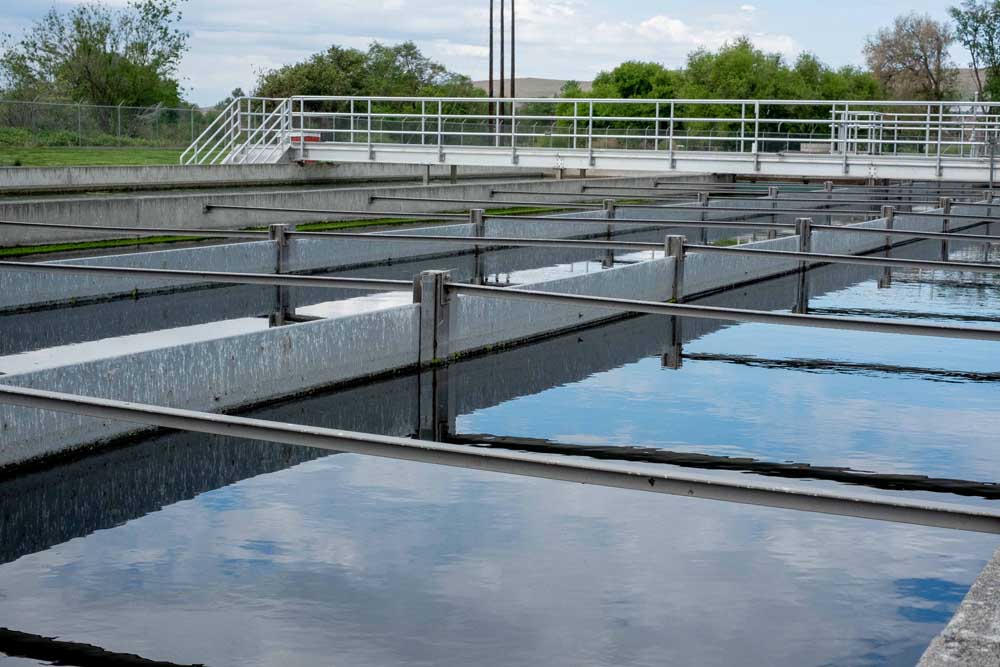Halfway farmer harvests with horse power
Published 8:39 am Friday, August 20, 2010
BAKER CITY – If you ever wondered how much farming has changed since, say, the 1870s, just watch Marvin Brisk harvest a Baker County barley field. And listen.
Instead of black smoke from a rumbling diesel-powered tractor there is the tawny dust of chaff and the rhythmic thump of horse hooves.
Brisk, who farms near Halfway, still uses horsepower of the old-fashioned variety.
And, just as his predecessors did a century and more ago, he relies on horses for virtually every part of the barley-harvesting process.
That process starts by using a horse-drawn binder to cut the barley.
Next is the thresher, which separates the barley kernels from the chaff.
Horses are connected to a carousel, and as they walk in a circle they turn the gears and belts that power the thresher. Finally, the horses are attached to another carousel that operates the baler, which compresses straw into rectangular bales.
Brisk demonstrated the traditional practices on Saturday on a neighbor’s barley field.
The binder, which revolutionized the harvest of barley, is actually the youngest of the technology that was on display.
The farmer uses modern machines on their land, but they enjoy demonstrating what was, literally, the cutting-edge technology of a bygone era.
The binder cuts the barley and moves it via a conveyer belt into a hopper. Inside the hopper, the barley is spun around a string and tied into bundles called shocks. The shocks are then left in the field to cure.
Brisk said the binder can tackle a half a football field worth of barley in about 15 minutes.
That’s much faster than having men cut the crop with hand-held sickles or cradle-scythes, as was the practice for many centuries.
And the binder is more efficient than the reaper, a horse-drawn barley-cutting machine that preceded it.
After the barley was cut, workers would pick up the shocks using a horse-drawn shock trailer. The shocks were then loaded into the thresher.
The design of the power plant for the thresher, called a sweep power generator, was first patented in 1868. In fact, the one Brisk uses might be the only original working one west of the Rocky Mountains.
“There are some in museums, but this is the only working one that was built more than 100 years ago,” he said.
Although Brisk isn’t sure how old his example is, he said the manufacturer, Buffalo-Pitts, ended production prior to 1900.
He built the thresher using parts only available during the 1890s. It is a half-scale replica of a thresher seen on farms in a different era.
The seeds were separated from the straw and emptied into bags which were tied and sent to market.
The straw is moved out of the thresher on a conveyer belt.
Once the straw was piled up, workers loaded it into a horse-powered hay press for making bales.
“The railroad stopped transporting loose hay so farmers had to find a way to bale it,” Brisk said. “In the early century (1900) the straw was sent off to Portland to be fed to horses used to tow the fire trucks.”
The hay press that Brisk demonstrated was built in 1897. It was the first portable model ever made.
For its time, this equipment and method was the most efficient way to harvest barley and alfalfa.
In fact, many people across the nation still use some of these designs today, though most have been upgraded with minor tweaks to get a cleaner separation of the seeds from the straw.
“For some (small-scale hobby) farmers it is more economically viable to do it this way. The upkeep of a horse is far cheaper than upkeep of a big tractor,” Brisk said. “Plus you only have to feed them, not buy them diesel.”





